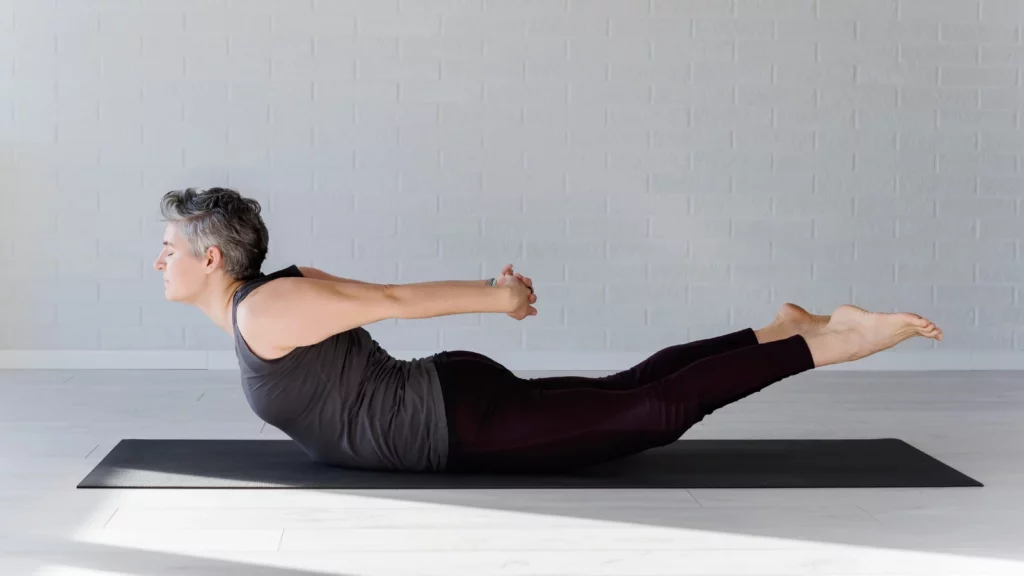Yoga for Healthy Aging: Study of Twins Shows that Muscle Fitness Predicts Better Cognitive Functioning

Article At A Glance
Studies show a strong correlation between muscle strength and increased cognitive functioning, and yoga practice is an excellent way to improve muscle functioning. Learn more about the research and recommendations here.
“Leg power predicts both cognitive aging and global brain structure, despite controlling for common genetics and early life environment shared by twins. Interventions targeted to improve leg power in the long term may help reach a universal goal of healthy cognitive aging.” —Steves, CJ, et al.
Although I always repeat to myself, “What is good for the heart is good for the brain,” I am used to thinking about the brain as somehow being separate from the rest of the body. So, I was flabbergasted to read about a recent study of aging twins that showed that powerful leg muscles resulting from physical exercise correlate with sharper minds.
Even though the brain is just another organ in your body, like your heart or your liver, we’re used to being told that doing mental exercises, like, God forbid, crossword puzzles, is the best way to keep our brains healthy as we age. This makes it hard for a lot of us—me included—to take in that something like doing yoga standing poses could actually be much more effective.
Study Shows Muscle Fitness is Correlated with Better Cognitive Functioning

In a recent study, Kicking Back Cognitive Ageing: Leg Power Predicts Cognitive Ageing after Ten Years in Older Female Twins (1), scientists at Kings College London tested whether muscle fitness (measured by leg power, since the thigh muscles are the largest muscles in the body) could “predict cognitive change” in a healthy older population over a 10-year time period. So that genetic factors could be ruled out, twins were used in the study. And because self-reporting about exercise patterns is “notoriously unreliable,” the scientists used leg strength instead as a more “objective indicator” to detect whether the test subjects had been exercising regularly or not.
The study was performed on 324 female twins (average age 55, ranging from 43-73). At the beginning of the study and then again 10 years later, scientists performed cognitive testing for all participants. For 20 pairs of identical twins, they also performed brain-imaging scans. According to The New York Times, the scientists found that those who began the study with the “sturdiest legs” showed the least “fall-off” in thinking skills, even when controlling for factors including fatty diets, high blood pressure, and shaky blood-sugar control. The Times reported that the differences in thinking skills were particularly striking within twin pairs:
“If one twin had been more powerful than the other 10 years before, she tended to be a much better thinker now. In fact, on average, a muscularly powerful twin now performed about 18 percent better on memory and other cognitive tests than her weaker sister.
“Similarly, in the brain imaging of the identical twins, if one genetically identical twin had had sturdier legs than the other at the start of the study, she now displayed significantly more brain volume and fewer ‘empty spaces in the brain’ than her weaker sister.”
This is dramatic evidence of how important exercise is for maintaining cognitive health! The funny thing is that even the main author of the study, Dr. Steves, was surprised by the results. The New York Times quoted her:
“I was quite surprised by the strength of the findings,” Dr. Steves said, “because, to be honest, I am someone who has always in the past prioritized the work of the mind over the work of the body. This study brings home to me that the brain needs exercise to keep fit.”
Yoga Practice to Strengthen Your Leg Muscles—And Your Brain
These yoga asanas are especially helpful for developing strength in your legs:

- Standing poses where you stand on one or two bent knees, such as Utkatasana (Fierce Pose) (photo above), Virabhadrasana II (Warrior II Pose), Utthita Parsvakonasana (Extended Side Angle Pose), and Anjaneyasana (Lunge Pose).
- Standing poses where you balance on one leg, such as Vrksasana (Tree Pose), Ardha Chandrasana (Half Moon Pose), and Virabhadrasana III (Warrior III Pose).
- Backbends where you lift your legs up away from the floor, such as Salabasana (Locust Pose) (shown below) and Parsva Balasana (Bird Dog Pose).

- Stretching poses for your legs, such as Supta Padangusthasana (Supine Leg Stretch Pose)—remember that stretching also strengthens.
For more information about the study, see The New York Times article, Brawn and Brains (2) (only the abstract for the study is available to the general public). (1)
Reprinted with permission from Yoga for Healthy Aging.

Nina Zolotow, RYT 500, Editor-in-Chief of the Yoga for Healthy Aging blog, is both a yoga writer and a yoga teacher. She trained to be a yoga teacher at The Yoga Room in Berkeley, California, has studied yoga therapy with Shari Ser and Bonnie Maeda, and is especially influenced by the teachings of Donald Moyer. She also studied extensively with Rodney Yee and is inspired by the teachings of Patricia Walden on yoga for emotional healing. Her special area of expertise is yoga for emotional well-being (including yoga for stress, insomnia, depression, and anxiety), and she teaches workshops and series classes on yoga for emotional well-being, stress management, better sleep, home practice, and cultivating equanimity. Nina is the co-author with Baxter Bell of Yoga for Healthy Aging: A Guide to Lifelong Well-Being and co-author with Rodney Yee of Yoga: The Poetry of the Body (with its companion 50 Card Practice Deck) and Moving Toward Balance. She is also the author of numerous articles on yoga and alternative medicine.
Sources
1. Steves, C. J., Mehta, M. M., Jackson, S. H., & Spector, T. D. (n.d.). Kicking Back Cognitive Ageing: Leg Power Predicts Cognitive Ageing after Ten Years in Older Female Twins. Retrieved from https://www.ncbi.nlm.nih.gov/pubmed/26551663
2. https://well.blogs.nytimes.com/2015/11/18/brawn-and-brains/?_r=1


